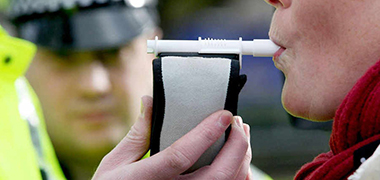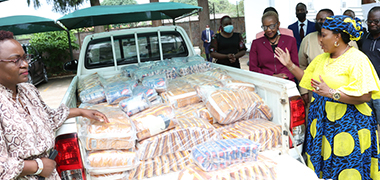Editorial Comment: Follow rules to stay alive

Once again special efforts are being made to bring some order to the roads this long holiday, and this year with the advent of breathalysers, far more effective action against one of the groups of the biggest killers, drivers who drink, can be taken.
But even with enhanced police patrols and back-up from a lot of other agencies, the main battle against dangerous and bad driving must come from the drivers themselves. They just need to follow the Highway Code, follow the rules, obey the laws and most accidents simply will not happen.
The biggest killers are speeding, being under the influence of alcohol, not stopping or giving way when supposed to and driving without paying maximum attention and being able to take appropriate action when faced with emergencies and dangers. Unroadworthy vehicles do contribute, but the faults would normally be in brakes, steering and tyres, with other faults just immobilising the vehicle.
The police are now able, at long last, to equip some patrol with breathalysers, and these must be used. Those who flunk the tests might need some care, since the number of drivers over the limit, especially at night and especially on holidays, is high.
Few drivers realise that while one drink can probably be consumed without hitting the limit, for many the second drink will take them over unless there was a long gap between the two and another gap before they took the wheel. More than two is just asking for the fail grade, and at this stage drivers start approaching the second reading, where they are deemed to be more than over the limit and now positively intoxicated.
Many drivers feel that two or three beers does not affect their driving. They are wrong, and are wrong for the same reason as they have become dangerous. They are unable to make a correct assessment. Studies, numerous studies around the world, have found that when your blood alcohol level reaches the figure where Zimbabwean authorities do not want you on the road you are now starting to be affected, not badly but badly enough for you to be off the road.
This is why the level was set where money might think it is unfairly low. It needed to be where the alcohol starts making you worse, not where you are blind drunk. People should simply not drink and drive. Drink at home; drink at a nearby friend’s house where you can walk home; drink at nearby bar; form a lift club with a designated driver; hire a taxi. There are many options. But having a few and then sitting behind the wheel is not one of them.
Many people are unaware, and the original research surprised the original research team and every team that has repeated the experiments and analysed the statistics, that talking on a mobile phone while driving is more dangerous than being just a little way over the alcohol limit.
Psychologists have tried to explain, and they could be wrong, but the fact is that the tests found driving ability and concentration was degraded noticeably. And that is important.
Speeding is a weird crime. It is not accidental since you are watching the clock, so it is deliberate and yet gains you trivial benefit with a great deal of stressful driving and a very high risk of accidents, death and injury.
There are very few open unused roads with zero obstructions, curves and other vehicles. So it is hard to sustain speeds over the limit, or for that matter over the flow of the particular group of vehicles you are now in as you climb the blind rise, veer round the curve and the like. Admittedly you can get bursts of higher speed, but not for long.
But even if you could drive at an average speed well above the limit, even on a journey from Harare to Bulawayo, you would probably only win less than half an hour on a four or five hour drive. And that gain is not worth killing someone else or yourself for. In city driving, where distances are so much shorter and a lot of the journey is watching traffic lights change colour or waiting for the car with right of way to pass, the difference might only be a minute or two.
The same impatience that causes speeding is responsible for taking chances when overtaking. It can be frustrating sitting behind a slower driver, or even worse a set of cars. But taking chances may kill you. You see people risking overtaking on rises and on curves; you watch people try to overtake a stream of cars. Sometimes it works and sometimes it does not and there is another wreck on the road.
Speeding can also create that lane drifting, even on quite mild curves, where a car drifts into the opposing lane, and if some innocent person is coming down the opposite direction you might both be dead.
A major problem is that many people think they are better driver than they are, and have a better car than they have. Few people make obvious tests of their breaking distance, their steering on certain road conditions and the like.
One simple test that could save a lot of lives is go for a drive at your normal speed but with a passenger. The passenger will as you pass some identifiable point shout stop, and when you stopped you measure, or just pace out, the distance from the point of the shout to the point of stopping. That gives you your reaction time and stopping time at that speed.
Now at night drive towards some known point and mark where you first see it. That is your night distance. The interesting comparison comes when you compare how far you can see with how long it takes to stop. If it takes longer to stop than to see you simply cannot stop in time.
The police can apply pressure, but cannot be everywhere. In fact we hear drivers boasting of which speed and other laws they have broken.
Somehow this appears acceptable while stealing or robbing would not be.
We all need to obey the laws to stay alive, and we need to encourage everyone else who shares the roads with us to do the same. That way we can all live.










Comments